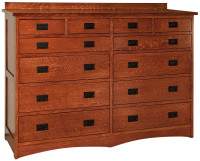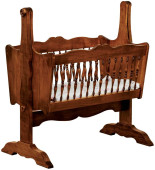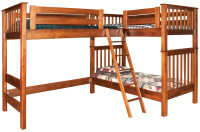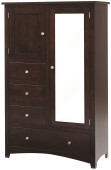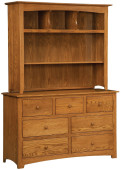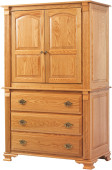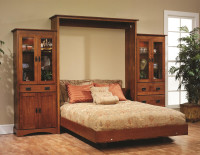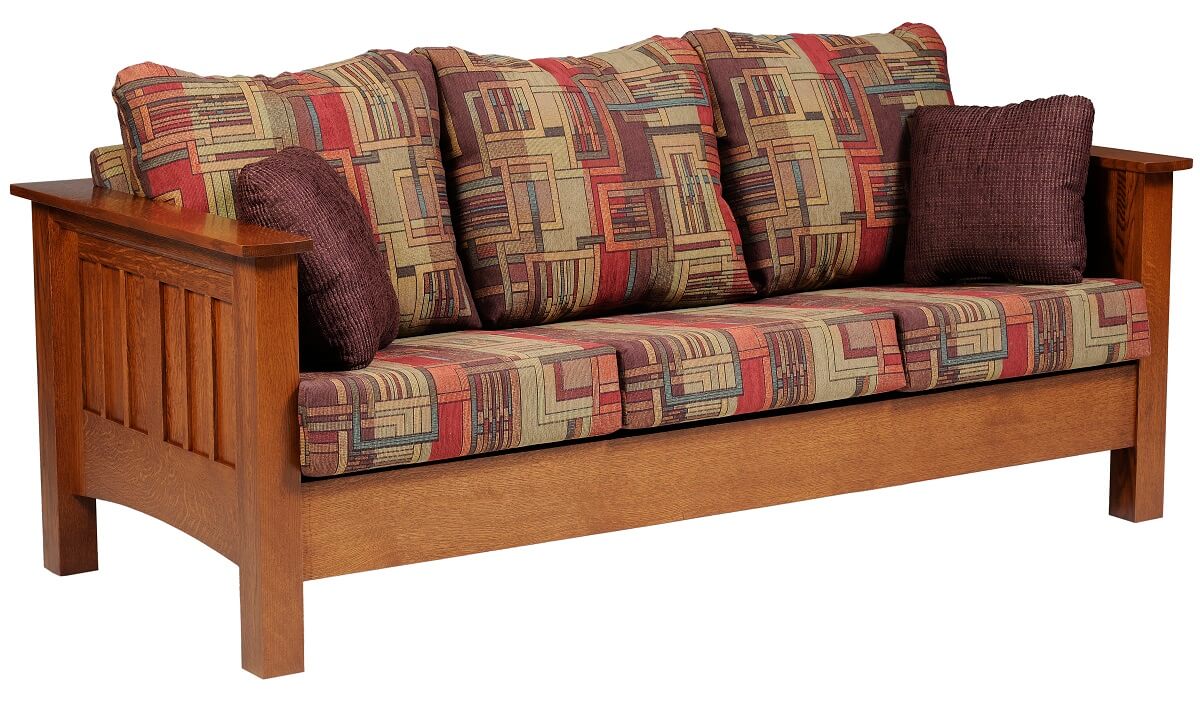Well-Made Furniture - Telltale Signs of Good Quality
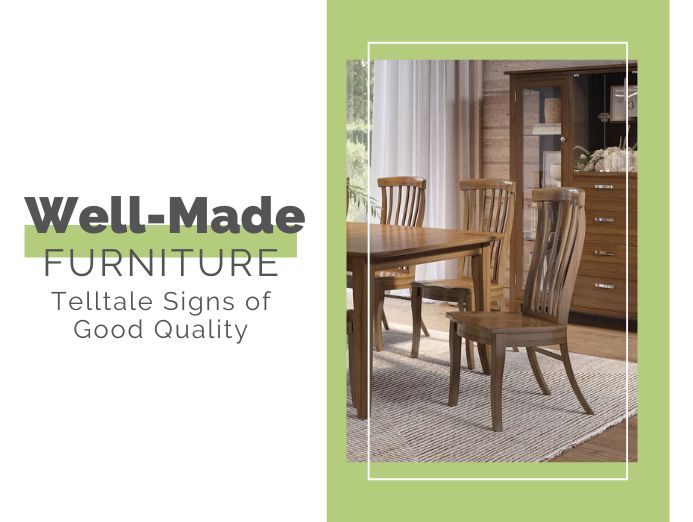
Good quality wood furniture can be a worthwhile investment that can serve your family for decades, let alone generations, all the while rising above fickle fads to stay timelessly beautiful. However, subpar-quality furniture only lasts a short while before ending up—directly or indirectly—making its way to landfills to contribute to the 12 million tons of furniture Americans produce each year. While it may appear attractive at first, its functionality will soon begin to break down, whether it be drawers sticking, pieces of particle board snapping off, or loose joints giving way.
Even if you’ve decided to buy well-made furniture, distinguishing quality from lesser imitations may not come easy to everyone. To help you determine if a piece is built to last and worth its asking price, we put together this guide to identifying quality furniture.
Examples of Good Quality Wood Furniture
Architectural Clues About the Furniture’s Quality
When assessing whether a piece of furniture is of good quality, run through the following list:
- Are the legs attached using esteemed joinery techniques rather than nailed or glued?
- Any intentional movement (rocking, drawer gliding, etc.) occurs smoothly and without creaking or other concerning noises
- All wooden surfaces should be sanded and smooth, even those which are rustically styled
- Well-made furniture should feel substantial and well-balanced—not easily knocked over or uneven
- If the furniture is wood, it must use hardwood if it's to be of good quality. This means no soft wood, engineered, plywood, or otherwise
Not sure what some of the above means? No worries, we’ll dive deeper into some of the more complex concepts.
Esteemed Joinery Techniques
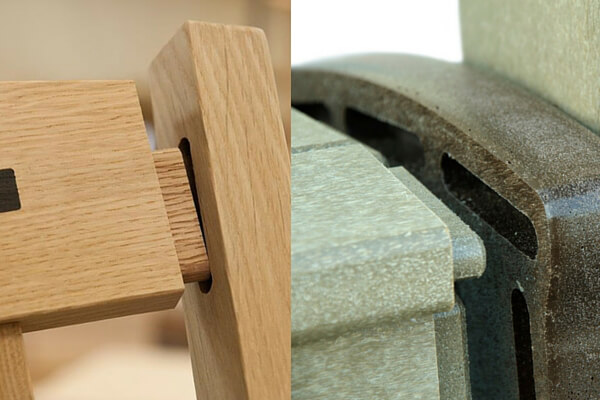 The corners or intersections of different wood slabs can be the most vulnerable parts of a furniture piece unless handled with skill and care. Unfortunately, many discount or rushed furniture making rely upon glue and nails to join the wood, compromising the quality of the piece.
The corners or intersections of different wood slabs can be the most vulnerable parts of a furniture piece unless handled with skill and care. Unfortunately, many discount or rushed furniture making rely upon glue and nails to join the wood, compromising the quality of the piece.
So, now that we’ve established the wrong way to join wood, what methods should you see in well-made furniture? The two most common options are tenon and mortise, as well as dovetailed techniques.
Skilled woodworkers produce mortise and tenon joinery by precisely fitting a projecting tenon on one piece of wood with a perfectly sized pocket (the mortise) on another, creating a secure and robust connection. While adhesives or fasteners can be added to further reinforce the combining of the wood, high-quality furniture will treat these as an extra measure rather than the primary connection technique.
Dovetail joints—most commonly used for bed slats, drawers, and other box-like shapes—require the craftsperson to shape one piece of wood to fit precisely into another, creating a sturdy and long-lasting joint. The parts that connect can best be described as thick, wooden teeth of equal size that interlace.
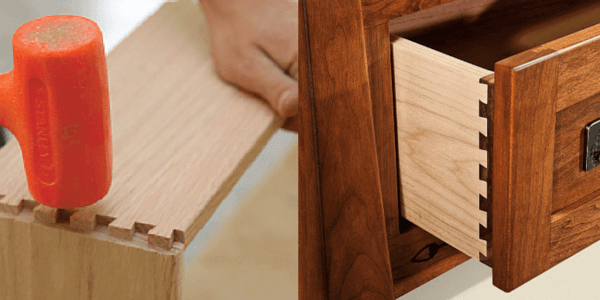
A common furniture joint that produces middling quality is the use of dowels. Though preferable to sole reliance upon fasteners and adhesives, it does not produce as strong of an intersection as the above two joinery techniques. Are dowel connections reason enough not to buy a specific piece of furniture? While that’s entirely up to you, make sure that both the price tag and your expectations are tapered.
Good Quality Hardwood vs. Subpar Alternatives
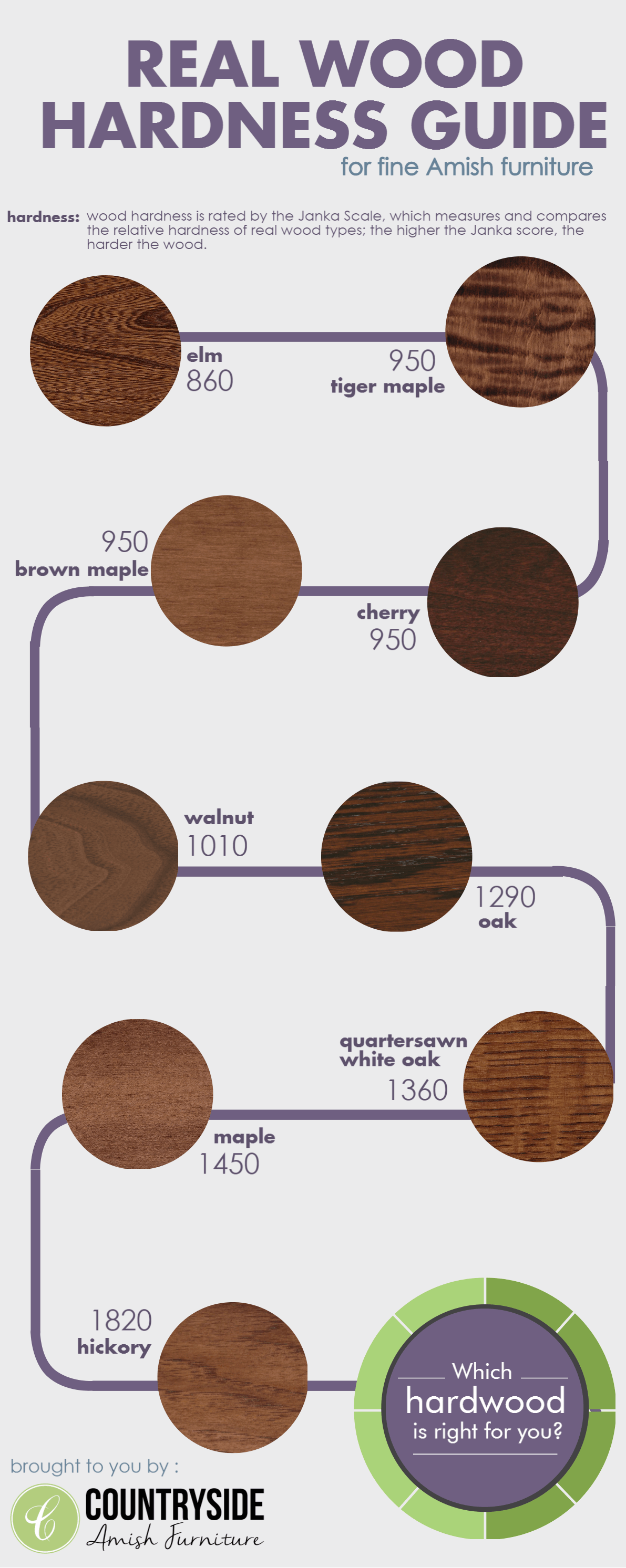
Popular wood species celebrated for their high quality (such as oak, cherry, brown maple, and walnut) are called “hardwood” for their dense structure that results in exceptional durability and resistance to wear. Unlike softwoods and engineered woods, hardwoods resist dents and scratches, maintaining the furniture’s integrity over time. This information is widely known by all furniture makers; anyone that uses particle board, plywood, and other subpar alternatives reveal themselves as chasing the lowest production cost possible rather than producing long-lasting, well-made furniture. In turn, it’s likely that they’re using other cost-saving methods to cut corners.
Are some hardwoods considered to be better quality than others for furniture? Shop online with Countryside Amish Furniture, and you’ll notice that ordering a table in red oak will be more affordable than ordering that same piece in walnut. So, does this mean oak doesn’t offer the same quality as walnut? Not necessarily. Maple does offer a higher level of “hardness” than oak, but the difference isn’t extreme. Rather the difference in price tag is primarily a reflection of the increased abundance of available oak, especially compared to the limited amount of maple that is ready for harvesting.
Use of Good Quality Textiles: Leathers & Fabrics
How can you determine the quality of a furniture piece's upholstery? Examine how it embraces the cushions; it should neither hang loosely nor ripple. Precision in pattern alignment along seams, rather than misalignment, is another key indicator of quality. Additionally, well-crafted furniture should showcase double-stitching along seams to ensure resilience against fraying.
High-quality leather for furniture is distinguished by its soft and supple feel, as well as a consistent coloring, patterns, and polish throughout the entire piece. Plus, we all know that distinct, rich smell that emanates from genuine leather, a result of the tanning process. When touched, authentic leather tends to feel warmer than synthetic alternatives, and its thickness contributes to a durable and substantial overall feel. Lastly, well-made leather furniture should sport tight seams and precise stitching.
A High-Quality Stain and Varnish Makes All the Difference
_-_28de80_-_6a9b3f829deb4ceda14d15526505f0d5bc329eb5.png)
A stain adds a protective layer to the wood while bringing out its personality through a myriad of color options.
The visual impact of a stain goes beyond the type used, as the process and precision with which woodworkers apply it ultimately contributes to the furniture’s good (and lasting) quality. Ideally, the craftspeople should apply multiple layers by hand, taking the opportunity to patiently assess the integrity of the finished components. A skilled furniture maker will produce a finish which is entirely smooth, free from any bumps, ridges, or unevenness.
The varnish is the final protective shield for well-made furniture. A good-quality finish resists moisture and damage, outperforming lacquer-based alternatives. However, for the full level of protection, the varnish must undergo a chemical curing process for at least 30 days, resulting in a post-catalyst conversion varnish that greatly surpasses what you’ll find on subpar furniture.
Telltale Signs of Quality From the Furniture Vendor, Themselves
A hard reality is that every furniture brand wants to make a profit, leading us to this hard-to-hear truth: an unbelievably low price is a surefire indicator that the builder cut corners, probably in both the materials and assembly. “Cheap” and “well-made” are direct contradictions for furniture.
As we explore in How Much Should a Wooden Dining Table Cost, the price tag is an indirect reflection of how much of the builder had to pay for the lumber, textiles, and other components; the skill-level of the craftspeople; and the amount of time needed to execute the finer details and performing quality control. If a table (or furniture piece) claims to have all the telltale signs of quality referenced above—advanced joinery, authentic real hardwood, high-end varnish—but carries a below-average price tag, the math simply doesn’t add up.
Other considerations when evaluating the furniture builder:
- How transparent are they - Do they provide details about the components behind the piece and their manufacturing practices or keep you in the dark?
- What kind of reviews do they have - Do customers seem satisfied with their work? Don’t only look at “the number of stars” but also the actual words written in the testimonials. Any praise heaped on sales people, the delivery process, or the discounts are helpful to note, but won’t directly indicate whether the furniture is of good quality.
- Bonus - are they a small, USA-based furniture maker - We know that Amish furniture makers and other American artisans don’t exclusively own the market for good quality furniture. However, as we explore in Buying Solid Wood Furniture Made in the USA - Why it Matters, shopping with small USA-based businesses helps to limit carbon emissions and comes with increased guarantees that certain harmful chemicals aren’t used. Plus, genuine Amish furniture makers solely use materials and woodworking techniques associated with good quality furniture, which is why they’ve earned such strong credibility.
Buy Well-Made Furniture From Countryside Amish Furniture
At Countryside Amish Furniture, our commitment to crafting good quality furniture begins with the painstaking selection of timber and textiles of equal caliber. Next, we transform these materials into furniture tailored to your individual style, using authentic Amish woodworking practices at every step of the build. From the careful joinery to the hand-application of stains and varnishes, we ensure that every furniture element is executed to perfection, contributing to the beauty and longevity.
We encourage you to browse the thousands of designs featured on our site, as well as to use the Chat function to reach out with any questions you may have. To learn more about how we evolve simple timber into well-made furniture fitting for any home, watch the video below!
FAQ About Furniture Quality
What care and maintenance practices can enhance the longevity of furniture?
Regular dusting and cleaning with a soft, damp cloth can help prevent the buildup of dirt and grime, preserving the appearance and good quality of the furniture. Avoiding direct sunlight exposure can also prevent fading or discoloration while using coasters or placemats under hot or wet items can protect surfaces from potential damage. For more tips, read How to Protect a Wooden Dining Table.
How can I identify quality metal hardware on furniture?
The primary determinant of whether metal hardware is well-made is the choice of alloys. Options like authentic nickel, bronze, and wrought iron are all examples of heftier metals that can withstand the rigors of regular use.
Which tends to be of higher quality – vintage or newly made furniture?
When people think of “contemporary” furniture, some minds naturally conjure ideas of “fast furniture” made with plywood and other shoddy materials, resulting in pieces only meant to last a few mere years. While these furniture options do indeed exist, they’re not fully representative of the freshly made pieces also at your fingertips. With stores like Countryside Amish Furniture, you have the option to buy both traditional designs and modern looks, all crafted with the same quality techniques of yesteryear.
Additionally, there are two distinct advantages Countryside Amish Furniture has over vintage furniture, starting with the fact that we can tailor the furniture to match your existing decor. While it’s possible to refinish vintage pieces, you risk compromising the furniture’s quality and value when doing so. Secondly, as the very first owner of a newly crafted piece, you have the opportunity to care for the furniture as necessary. With vintage items, there are no guarantees that the previous owner handled the piece responsibly.
Our point? If you choose the right furniture builder, you can receive the good quality for which vintage is known alongside the ample benefits that come with designs personalized just for you.
Outside of real wood, what are materials that indicate good quality in furniture?
While wood is the superstar of the furniture world, it’s certainly not the only high-quality option on the market. In fact, sometimes it’s not even the best material for certain circumstances, such as the great outdoors. Well-made furniture can also use:
- Tempered glass
- Marble and other natural stone
- Stainless steel or similar alloys
- Poly lumber
- Rattan
- Bamboo
When assessing all of the above, make sure to confirm the authenticity of the material and the overall weight of the furniture. As a general rule of thumb, well-made furniture will have heft that won’t be easily jolted or knocked over.

